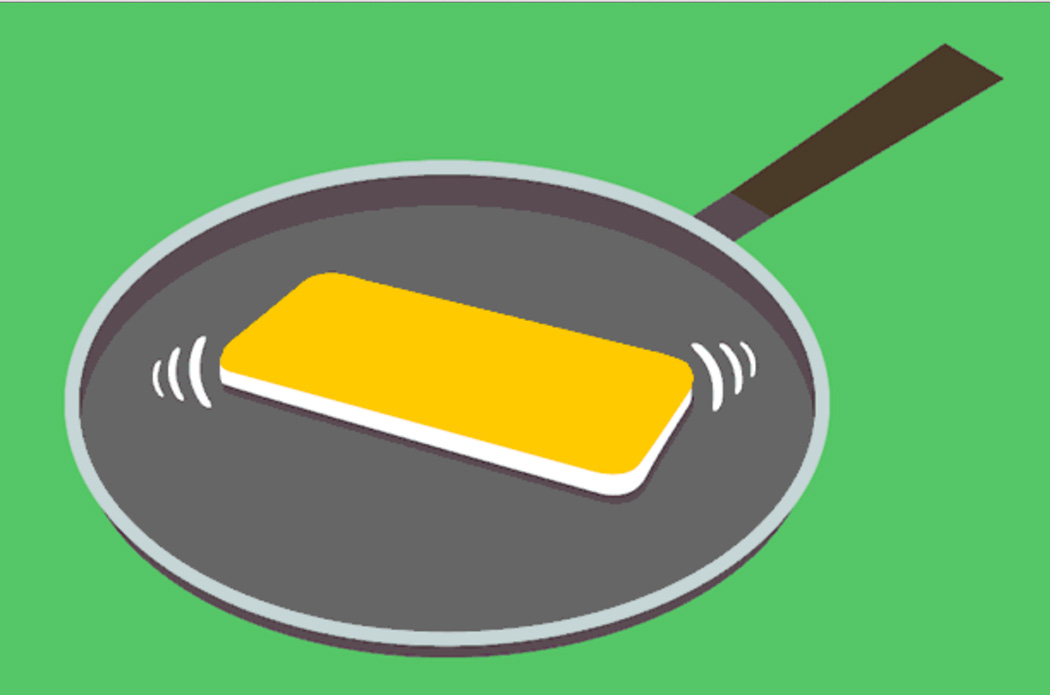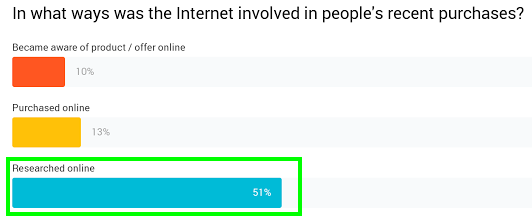When ecommerce took off in the late 90s, many called it just another ‘fad’. Now, with ecommerce permeating its way into even our handheld devices, we clearly know how wrong they all were. Expanding is a small term, online commerce is exploding, to be specific.
Keeping tap on every bit and piece of this exploding mess is nonetheless difficult. With the facts that I listed down last time in the first article of this series, it is clear that not going mobile is not a matter of business’ choice now. The good part is that you know where you want to be – on mobiles and hand held devices.
The devious part is that you don’t know the way – mobile app or a mobile friendly website?
Today’s post will help you slide out of this dilemma.
Let us first begin with the difference between the two
Native apps or mobile applications are yet another app added to the phone memory of a smartphone user. It is estimated that an average user has 65-75 apps at any point of time in their smartphones. Downloading yet another app might be a trouble for some.
Mobile friendly sites are just another website trimmed and spruced down to suit the limitations of a mobile screen’s space and interface. More than 51% of customers begin their online purchase via a search engine, which is a clear indication of their intent that they are not interested in being your loyal customer, but are browsing on mobile for a good deal. Hence, having a mobile optimized website would certainly give you an upper edge over others, and also save you bucks and additional efforts.
So, in my opinion, native apps serve better to loyal customers. They just want to buy from “you” and hence, having you with them all the time isn’t troublesome.
As a foodie and Bollywood movie-buff, I always have Zomato, BookMyShow, Paytm, and Maps on my smartphone.
But as an ecommerce shopper, I prefer checking out first where my desired item is available and where I can buy it in the lowest value or get delivered in the least number of hours.
This brings us to an understanding that there are certain key factors that need to be first considered and the benefit of having a dedicated app or mobile-site be weigh upon.
First, your Business Model
If you are an ecommerce owner or a marketer, you must be having answers to these questions:
– What are you selling?
– Who are you selling it to?
– Why do you need mobile exposure?
Just jot the answers down and you will know what to do.
If your business is about giving out discounts, or quick purchases that help avoiding the queues then go App-way. But, if yours is a local business that drives a lot of traffic from search engines or social media channels, then a mobile-optimized website approach would be better.
Similarly, if you are selling to millennials, then an application would serve your purpose as to them, having an app is a norm. However, if your audience is any bit of an older generation, or one that may require some consultation or customer service, then you should definitely have a mobile-optimized website. Having an app becomes secondary, or optional.
How much you are ready to ‘Invest’ matters!
For a casual shopper visiting a store, there’s no chance that he’ll download an app to complete his purchase. That app might be pretty useful, but he might never see it because he is not engaged enough with that brand.
Developing and marketing an app is going to require an investment of time, personnel, and money. If yours is a well-funded start-up, then going through the painstaking process of getting a specialized app may not be an issue for you. You obviously want a seamless browsing, buying and checkout experience for your visitors.
However, if you are bootstrapping your business, the wiser choice is to make certain changes to your existing website architecture in such a way that it earns itself the tag of “mobile friendly” by Google. Other available resources would be better spent on ensuring that the main sales channel, the website, is optimized, no matter what the customer is using to shop your store.
This calls for a mobile-responsive website and various other features. (Although some say that responsive design is dying.) But first, use this tool by Google to check if your current website is mobile-friendly or not.
Now, let us check out other things that would qualify your website as mobile friendly:
1. Set form input attributes (for example, turn off “autocorrect” and turn on “autocapitalize”)
2. Set a mobile friendly preferred width which is variable for different screen sizes
3. Set image widths to 100% and not user-scalable
4. Do not disable “Submit” buttons
5. Use word-wrap with long strings or texts
6. Avoid fixed positioning of content. Keep it floating.
For more tips, you can check out this article or a full guide by Distilled to become a pro at this stuff. (The Distilled guide is awesome!)
Consider how a customer would think of “safety of his information”
In a crisp manner, let us recall our own online browsing experience.
With mobile sites, which require accessing internet and sharing confidential information, it is a nightmare for us to take the plunge. I, personally, would rather shop on my desktop where I have all the anti-virus and malware blocking softwares installed. Or may be a native app, where I can allow or disallow the app to gain access to my personal information, location, or system tools.
Just like me, native apps provide a sense of ownership that the data remains on their device and can be cleared anytime, if they feel like. That’s why quick transaction apps are flourishing while other ‘product’ ecommerce sites are getting revenues from mobilized websites.
You’d still have to give due regard to your Competition
Getting fewer orders should not be the deciding factor. The point that should get you worried is,
How many orders are you losing by not having a mobile-optimized website?
By now, you might be thinking that having a mobile website is something non-negotiable. You’re quite right about that.
So the question only remains that do you also need an app?
Well, yes. May be, no.
This is really like a duel between feature phones and smartphones. I need a phone that is smart and intuitive enough to do all my mundane tasks on-the-go, but do I really need a feature phone just because my peers are boasting one?
To get out of this dilemma, think of differentiation. What actually separates a smartphone and a feature phone? Features, right?! Feature phones have got additional features to help you with your any kind of business.
Likewise, having an app with features that has capabilities superior to html apps (think of push notifications, high-end graphics, hardware sensors like GPS, accelerometer, etc.) can propel you on the forefront of customer retention. Plus, these apps are lightweight.
This implies, that the opportunity lies not just in converting a website into a native app, but to create an app that can truly leverage the “new” use cases, like on-the-go or on-the-couch.
Other Challenges
While challenges for native apps would be screen formats, resolutions, and also, the operating system, for mobile optimized sites it would be browsers and crowded designing. The design even for the website needs to be slick and quick.
Summing it all up
A mobile website will serve its purpose best when the user is not aware of “from where to buy” or “what to buy”. A native mobile app is more valuable and generates true ROI for only the loyal or return customers.
Task for you
Now, that you have made up your mind on how you want your webstore to be, let’s talk about the must-have functionalities. Oops! They are locked inside this block. To unlock, share this article with someone who would benefit from it like you just did.
- A “click-to-call” phone number is one the most essential feature that every business should position in front and center of their website. This feature greatly helps all mobile users as they only have to click the number and their smartphone will call you. It allows the customers to instantly and directly connect with your business.
“Never forget that a customer who is checking out your business on their phone — is holding a phone.”
- Social media integration is like you’re advertising for free.
It allows you to directly connect with your users, thus creating a buzz around your brand. In addition, inclusion of social elements is a must. For instance, a free online deal-tracking service called Hukkster, which has a mobile friendly site, allows first-time users to sign up to use by entering their Facebook and Google credentials. That is important as they are intrinsically visual. Social platform like Pinterest and Instagram helps hotel and fashion businesses to flourish.
Therefore, it becomes clear that integrating those platforms into their mobile sites can fetch you great revenues. On the other hand, Twitter integration suites better for airlines and TV shows as they are the trends that garner high engagement on the microblogging service. Therefore, decide on the social platforms as per your business to grow better and big.
It is always better to cease yourself to two or three social media sharing buttons.
- Local SEO focuses on generating results that are relevant to a searcher based on their present location. Lately, Google revealed the facts that 87% of people use their phone when on the go and one in three US mobile queries has went ‘local’ now.
Google also established that 95% of mobile users are looking for local details on their phones and calling or visiting a business becomes one of the most important functions. It becomes important for you to fit yourself in that action and local results have started to dominate mobile searches.
- Beacons and near-field communications (NFC) are the types of transmitters that convey targeted information to a user’s smartphone whenever they come in the vicinity of an enabled app.
Apple’s iBeacons is a new addition to its own stores. It greets the customers on their iPhone as they walk through the door. It shows them the product information, offers promotions and makes their lives easier by offering the ability to pay without being in a queue.
Furthermore, the transmitters allow for a targeted message from marketers, considering their location, user behavior and user profile. This will augment the probability of conversion it will catch the customer’s attention just at the right point of the passage.
- Barcode scanning is that little magical tool that scans items of your home and also put them in a shopping basket. In the reality, your mobile device can also offer the same functions with its camera marking its massive effect on traditional supermarket shopping.
Tip #1: Get yourself a Flat design
As mobile devices have turned out to be primary tool to browse Internet, it has become important for desktop sites to make use of responsive design. Flat tile shaped sections on a site are much more compliant and easier to shrivel down and reorganize when seen on different screen sizes.
Also, it becomes quicker for a page to load if you don’t put unnecessary graphics and animation. It will not only improve your website’s SEO, but will also make your site highly user friendly and accessible.
Tip #2: Google Analytics is the king when it comes to tracking user-friendly website traffic.
It’s a free self-service tool, which lets you show the number of people visiting your mobile site; it also offers a glimpse of the devices on which your site was see and how often it was seen, along with where they live, how they found your site and a lot more. The trick is to use what you have learned from your mobile strategy.
Tip #3: Be Touch Friendly
It’s a problem with small screens that you cannot click on an exact element. To make it easy for your customers, ensure that is sufficient space between dissimilar touch elements within your content. Also, it is better to keep touch elements at 7×7 mm size visually. In addition, preserve the separators between touch elements at 2×2 mm size.
For more useful resources, check out this & this link.
Also, do you realize that mobile cart abandonment is way higher than desktop abandonments?
What should your strategy be now?
Explore the hacks and learn how other companies have successfully leveraged certain techniques to skyshoot their conversions. Sit tight. Our next article holds just that!




























